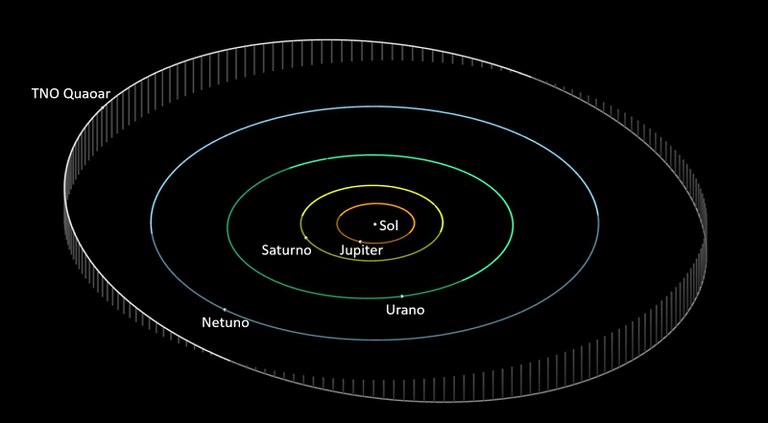Researchers from the National Observatory (ON), linked to the Ministry of Science, Technology and Innovation (MCTI), are celebrating yet another discovery. This time, the team, in collaboration with other scholars, found an unlikely ring around the asteroid Quaoar. The study was published in the February 8 issue of the journal Nature.
The small body in our Solar System is known as a trans-Neptunian object (TNO) as it orbits the region beyond the planet Neptune. The asteroid is 41 times farther away than the distance between Earth and the Sun. It is 1,000 km in diameter and can be considered a dwarf planet. The study was led by Brazilian astronomer Bruno Morgado, a professor at the Valongo Observatory at the Federal University of Rio de Janeiro and a PhD in Astronomy from ON.
According to Morgado, there are several possible theories for the formation of the rings, but the most likely is that there was a collision between the asteroid Quaoar and another object, and the debris from the latter caused the appearance of the ring. “It is not yet known how long it takes for the ring to form. We know that a ring lying outside the Roche Limit is expected to become a satellite in the order of 10 to 20 years, but rings can be stable and have the age of the Solar System or any value in between. “, he said.
Previously, studies had already found rings around small bodies. This is the case on the asteroid Chariklo (2013), and on the dwarf planet Haumea (2017). This is the third discovery of rings around a small body. “Now the rings can be unstable and have the age of the Solar System”, stresses the researcher, noting that the asteroid has implications for astronomy. “Understanding this physics is the great mystery. Quaoar brings up more questions than answers,” he points out.
The study was developed as part of the Lucky Star collaboration, under the leadership of Bruno Sicardy of the Paris Observatory (France) and was only possible thanks to a worldwide collaboration involving professional and amateur astronomers. The study had the participation of researchers from different institutes around the world.

